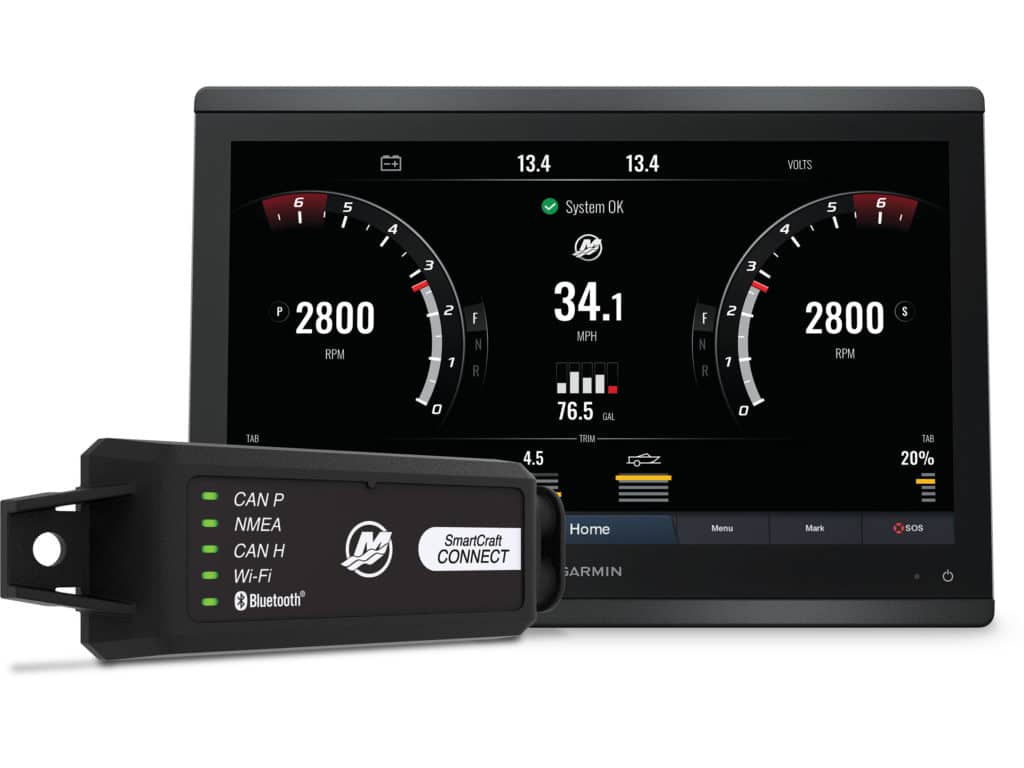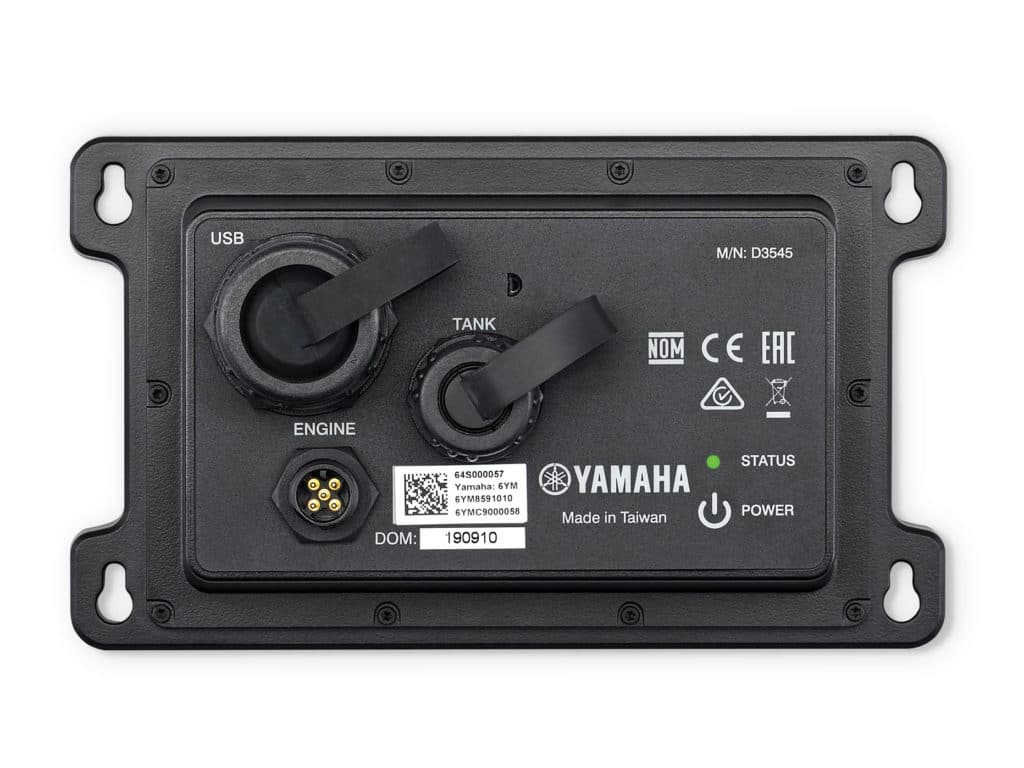
Modern boats are increasingly powered by computers on the engine and at the helm rather than fuel. Mercury SmartCraft, Yamaha Helm Master EX and Volvo Penta Electronic Vessel Control systems, to cite three examples, incorporate steering control, an autopilot system, a virtual anchor, auto trim and more. A touchscreen multifunction display at the helm offers the potential to combine navigation, fish finding, and touchscreen switching for many vessel functions. Often the MFD can also show engine data and control engine functions; however, it can’t always because the engine’s computer might not be able to fully integrate with the MFD.
Every engine manufacturer offers an MFD designed to work with its engine computing system. This is much more complicated than simply plugging a new monitor into your desktop computer. Two software systems have to integrate. So, engine builders team up with one of the MFD manufacturers to create branded displays. Mercury VesselView displays are made by Navico (Simrad/Lowrance), Yamaha and Volvo Penta use Garmin, and Suzuki uses Furuno.
An MFD not specifically designed to communicate with the engine can still display basic engine data through an NMEA 2000 connection, but graphics, fault codes and touchscreen functions might not work. Boat manufacturers usually align the MFD with the engine brand or leave room at the helm for a stand-alone proprietary display. If you repower your boat, however, you may have to choose between installing a new MFD that functions with the new engines, adding an engine-specific display, or finding another option. For example, in our story about repowering a 1998 Cruisers Yachts 2870 Rogue (boatingmag.com/sterndrive-repower) with new SmartCraft-enabled MerCruiser sterndrives, the engines could not communicate the VesselView data to the existing Garmin MFD, and there was not space on the helm for a separate VesselView display. The owner’s solution, installing VesselView Mobile to transmit the VesselView interface via Bluetooth to an iPad, is less than ideal.
To address this situation, Mercury recently released SmartCraft Connect, an MFD interface (MFDI) designed to allow VesselView to function on various Garmin and Raymarine MFDs. Mercury calls VesselView an “experience,” saying it’s the operating system that’s important, not the hardware. The MFDI translates the Vessel-View data, functions and graphics to the Garmin operating system. Right now, that experience is not complete; some touchscreen functions, such as cruise control and Active Trim, are not available on the Garmin display. That will change in the coming year with upcoming software updates, according to Mercury.
Read Next: We Test Marine Multifunction Displays

The Yamaha Helm Master EX system includes two MFDI units: one for Garmin displays ($1,487) and another for Raymarine units ($1,965) that require an HDMI connection. The Garmin MFDI enables all Helm Master EX touchscreen functions, but the Raymarine MFDI requires a small handheld controller for those functions.
The Mercury and Yamaha MFDI devices should not be confused with the gateway devices (Mercury VesselView Link and Yamaha gateways) required to connect the engine to the boat’s NMEA network and any type of display. These gateways act as a firewall between the MFD and the engine’s computers. Boats today might be powered by liquid fuel, but they increasingly run on software.








